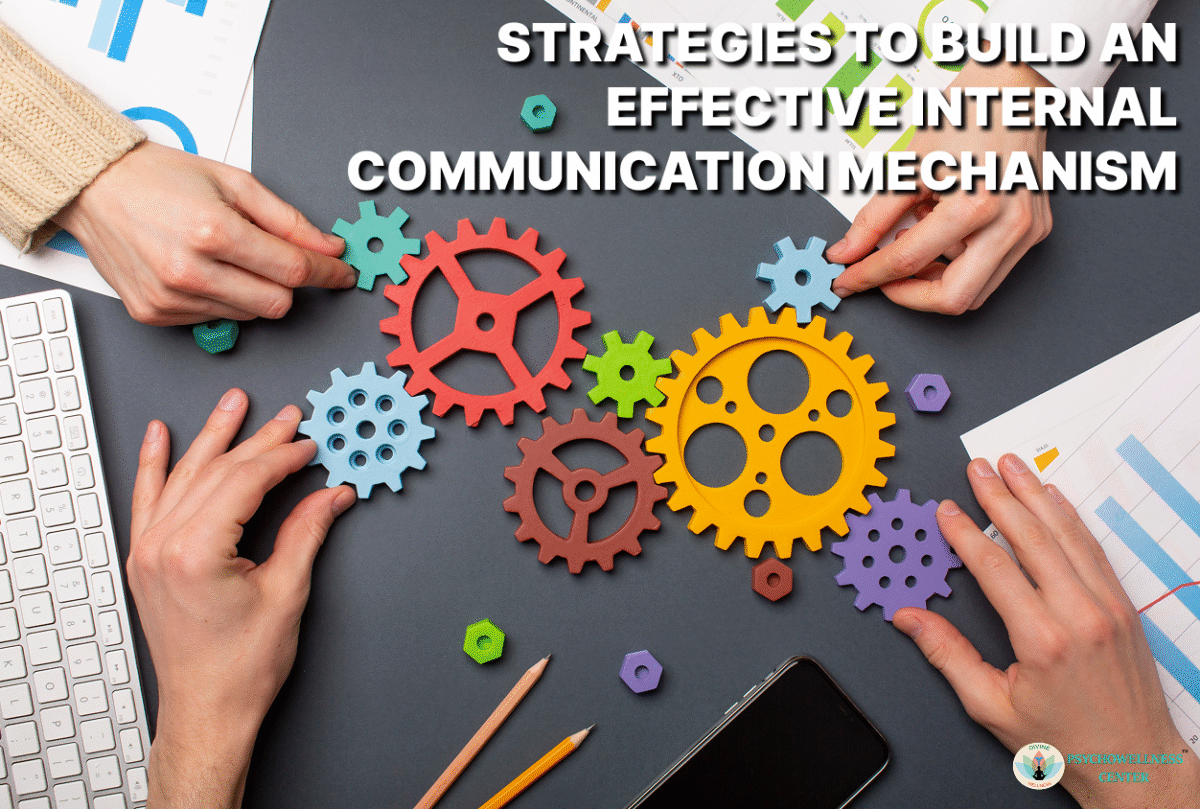Effective internal communication is essential in the fast-paced workplace of today. The way information flows within an organisation can significantly impact productivity, employee morale, and even mental health outcomes such as anger, stress and anxiety. Organisations with robust communication mechanisms often report higher engagement, reduced misunderstandings, and a more cohesive workplace culture. This blog explores actionable strategies for developing an effective internal communication mechanism and its direct influence on employee well-being.
1. Foster a Culture of Transparency
Transparency is foundational to trust. When employees are aware of organisational goals, changes, and decisions, they feel more secure and engaged. Lack of transparency, on the other hand, can create confusion, lead to misinformation, and even escalate workplace stress and anxiety.
Strategy Tip: Implement weekly or monthly updates from leadership. Encourage leaders to share not just successes but also challenges and how the team plans to overcome them.
2. Utilise the Right Tools
Technology plays a crucial role in internal communication. Email is no longer sufficient. Organisations now rely on communication platforms such as Slack, Microsoft Teams, or internal social networks to keep everyone connected. However, over-communication can be as harmful as under-communication.
Strategy Tip: Define the purpose of each communication channel. For example, use Slack for real-time collaboration, emails for formal communication, and a shared intranet for documentation.
3. Encourage Two-Way Communication
Internal communication is not just about disseminating information, it’s also about listening. Employees need channels to express feedback, concerns, and suggestions. Ignoring this can lead to feelings of being undervalued or unheard, which may contribute to anxiety and low job satisfaction.
Strategy Tip: Create structured feedback mechanisms like suggestion boxes, anonymous surveys, or regular one-on-one meetings with managers. Consider appointing internal counsellors or trained personnel who can offer guidance or redirect employees to therapists when mental health concerns arise.
4. Train Leaders to Communicate Effectively
Managers and team leaders often serve as communication conduits between the executive level and frontline employees. If leaders lack communication skills, they may unintentionally spread confusion or stress among team members.
Strategy Tip: Invest in leadership training that includes modules on emotional intelligence, active listening, and mental health awareness. Leaders should be trained to recognise signs of burnout and anxiety, and know when to suggest professional support, such as speaking with a counsellor or therapist.
5. Promote Mental Health Conversations
Mental health in the workplace should no longer be a taboo subject. Encouraging open dialogue about stress, anxiety, and burnout reduces stigma and can lead to proactive solutions. When employees feel safe discussing these issues, they are more likely to seek help and less likely to suffer in silence.
Strategy Tip: Host monthly mental health awareness sessions with guest speakers like licensed therapists or workplace counsellors. Provide resources such as Employee Assistance Programs (EAPs) and maintain confidentiality in all mental health-related communications.
6. Personalise Communication Styles
Different teams and individuals prefer different communication styles. Some may appreciate direct messages, while others may prefer structured email communications.
Strategy Tip: Conduct a brief survey to understand team communication preferences. Tailor your messaging style based on the audience. For instance, technical teams may prefer bullet-point updates, while creative teams might engage better with visual formats like infographics or videos.
7. Establish Clear Communication Policies
Without guidelines, internal communication can become chaotic. Employees may miss important messages or feel overwhelmed by excessive notifications. Clarity in communication policies prevents misunderstandings and ensures consistency.
Strategy Tip: Develop a communication playbook. This document should outline response time expectations, appropriate channels for different types of communication, and crisis communication protocols. Having such a guide helps reduce stress caused by information overload or lack of clarity.
8. Recognise and Celebrate Achievements
Positive reinforcement is a powerful communication tool. Recognising employee contributions boosts morale and strengthens team cohesion.
Strategy Tip: Integrate employee recognition into your communication mechanism. Use newsletters, team meetings, or digital recognition boards to celebrate accomplishments. Make it a routine part of internal communication, not just an occasional gesture.
9. Measure and Adapt
Effective communication mechanisms should evolve based on feedback and outcomes. Measuring success through employee satisfaction surveys, retention rates, and engagement scores is crucial.
Strategy Tip: Use anonymous pulse surveys to assess communication effectiveness and gather suggestions for improvement. Make adjustments based on data and communicate the changes so employees know their input has an impact.
Conclusion
Building an effective internal communication mechanism goes beyond choosing the right tools, it’s about creating a culture of openness, support, and clarity. By considering employees’ emotional well-being and integrating support systems like counsellors and therapists, organisations can significantly reduce stress and anxiety levels. Communication, when done right, becomes a force that unites, empowers, and protects the workforce.
For organisations looking to enhance internal communication through emotional wellness initiatives, the Psychowellness Center, located in Dwarka Sector-17 and Janakpuri, offers in-person counselling with experienced psychologists, including some of the best psychologists near me, who support teams in managing workplace stress, improving interpersonal communication, and fostering psychological safety. Additionally, TalktoAngel provides secure and confidential online counselling, making expert mental health support accessible for employees across all locations. Both platforms are committed to promoting healthier work environments where clear communication and emotional well-being go hand in hand.
This piece shares valuable insights from esteemed professionals, Clinical Psychologist Dr. R.K. Suri and Counselling Psychologist Ms. Sheetal Chauhan, who outline practical approaches and techniques for strengthening emotional resilience and promoting long-term psychological well-being.
This blog was posted on 27 August 2025
References
American Psychological Association. (2023). Workplace mental health: Employer responsibility and strategies. https://www.apa.org/news/press/releases/stress/2023/workplace-mental-health
Bakker, A. B., & Demerouti, E. (2017). Job demands–resources theory: Taking stock and looking forward. Journal of Occupational Health Psychology, 22(3), 273–285. https://doi.org/10.1037/ocp0000056
Krekel, C., Ward, G., & De Neve, J. E. (2019). Employee wellbeing, productivity, and firm performance. Saïd Business School Working Paper. https://doi.org/10.2139/ssrn.3356581
Mind Share Partners. (2021). Mental health at work 2021 report.

